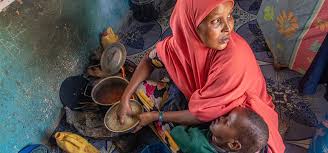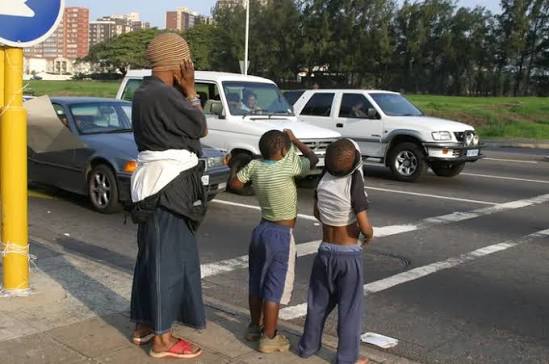Poverty remains one of the world’s biggest challenges. Even though millions of people have been lifted out of extreme poverty over the last 25 years, new global problems — from climate change to conflict — are pushing many back down.
The COVID-19 pandemic alone forced about 150 million people back into poverty, marking the first global rise in extreme poverty in more than 20 years. Today, nearly 700 million people — around one in ten on the planet — live on less than $2 a day.
But what really causes poverty? And how can the world solve it?
Below are ten major causes — and what can be done to help.
1. Lack of Access to Clean Water and Nutritious Food
For millions, even the basics like clean drinking water and food are a daily struggle.
2.2 billion people don’t have access to safe drinking water.
820 million people don’t have enough to eat.
Around 2 million children die each year from malnutrition.
Hunger and poverty feed each other — literally. When people are weak or sick, they can’t work or go to school, keeping them trapped in hardship. In East Africa, drought has destroyed crops and livestock, leaving families hungry and dependent on food aid.
2. Poor Access to Healthcare
Half of the world’s population still can’t reach basic health services.
Without nearby clinics or affordable medicine, treatable illnesses become deadly. Every year, 5 million children under five die from preventable diseases.
Families spend their small savings on medical care, often falling deeper into poverty. For example, in many Tanzanian villages, long distances to hospitals mean mothers give birth at home — risking their lives and their babies’.
3. Inequality and Social Injustice
Poverty is not just about money — it’s about opportunity. Inequality, whether based on gender, race, or disability, limits people’s chances.
Women, for example, own only 13% of global farmland and make up most of the world’s unpaid labor force. In many cultures, girls are denied education or married early.
Social injustice keeps people powerless, preventing them from escaping poverty no matter how hard they work.
4. Conflict and Instability
War destroys everything — homes, schools, hospitals, and hope.
In countries like Syria, South Sudan, and the Democratic Republic of Congo, millions have been displaced. Refugees often lose everything and live in camps where education and work are limited.
Armed conflict is one of the fastest ways poverty spreads — it turns thriving families into survivors overnight.
5. Lack of Education
Education is one of the most powerful tools to end poverty — yet millions of children never see a classroom.
According to UNESCO, 171 million people could escape poverty if they had basic reading skills.
But poverty also causes poor education — parents can’t afford school fees, or children must work to support their families. In rural Tanzania, for instance, some children walk more than 10 km to reach a school that lacks books, electricity, and teachers.
6. Lack of Jobs and Livelihood Opportunities
Even when people are willing to work, jobs are scarce — especially decent, safe ones.
In rural areas, most people rely on farming, but climate change and unstable markets make income unpredictable.
Without stable jobs, people can’t plan for the future or save for emergencies. The result? A cycle of hand-to-mouth survival.
7. Poor Infrastructure
Roads, electricity, internet, and clean water systems are not luxuries — they are lifelines.
When villages have no good roads, farmers can’t sell their crops. When there’s no electricity, students can’t study at night.
Infrastructure opens the door to opportunity. Without it, poverty persists.
8. Climate Change
Rising temperatures, floods, and droughts are making the poor even poorer.
The World Bank warns that 132 million more people could fall into poverty by 2035 due to climate change.
Farmers lose harvests, fishermen lose catch, and families lose homes. In coastal regions like Bagamoyo and Zanzibar, sea-level rise threatens to swallow farms and villages.
9. Weak Government Support
In many developing countries, governments lack the funds or systems to protect citizens from poverty.
Strong social programs — such as health insurance, food aid, and job training — can cut poverty rates in half.
But where corruption and weak governance exist, resources rarely reach those who need them most.
10. Lack of Financial Safety Nets
For most poor families, there’s no backup plan.
No savings, no loans, no insurance. One illness, accident, or bad harvest can wipe out everything.
Programs like microfinance and village savings groups help communities build safety nets. In Tanzania, women’s groups in Mwanza and Dodoma are using these small savings schemes to start small businesses and lift each other out of poverty.
Fighting Poverty — Together
Ending poverty is not a dream — it’s a global mission. Organizations like World Vision, UNICEF, and local NGOs are helping communities access clean water, education, and sustainable livelihoods.
You too can be part of the change:
Sponsor a child’s education.
Support local women’s savings groups.
Advocate for fair policies and environmental protection.
Poverty has many causes — but also many solutions. With compassion, collaboration, and courage, the world can help every person live a life of dignity and opportunity.
Final Thought
As one Tanzanian proverb says: “Umoja ni nguvu, utengano ni udhaifu” — Unity is strength, division is weakness.
When the world stands together, poverty has no chance.



